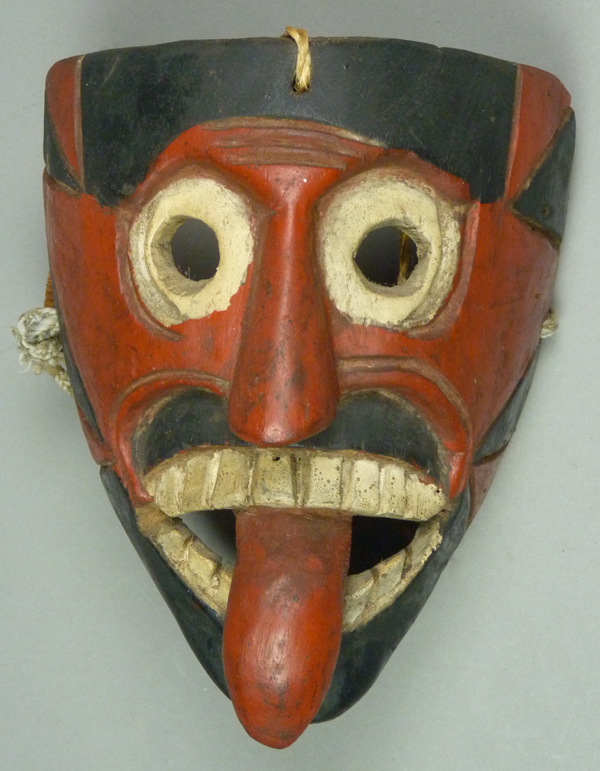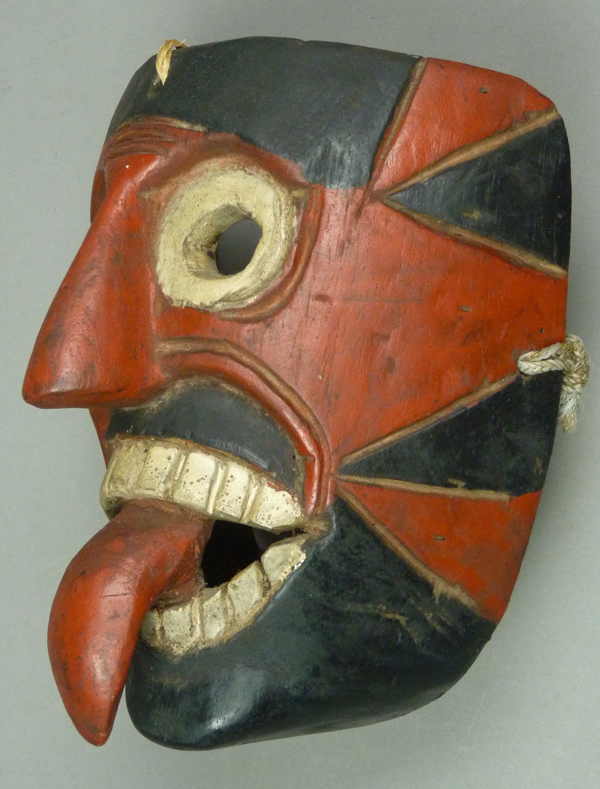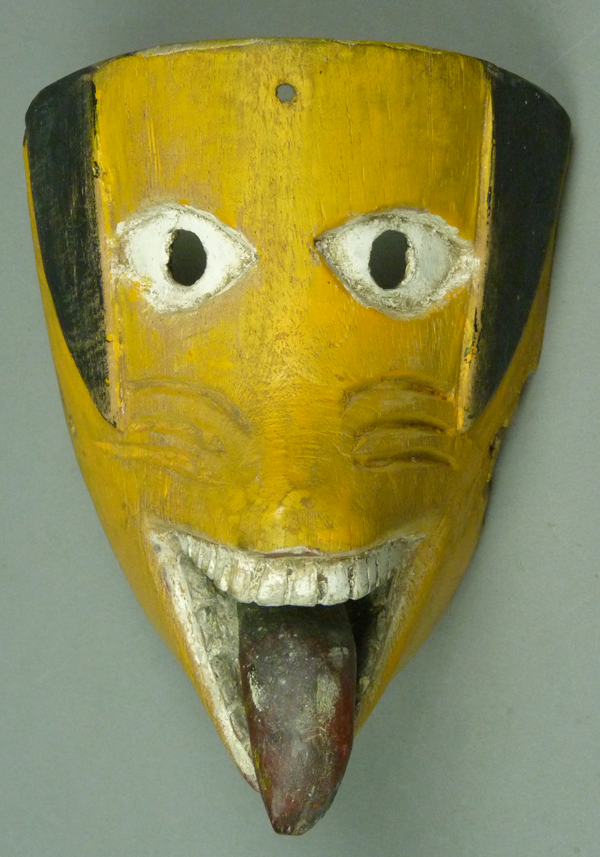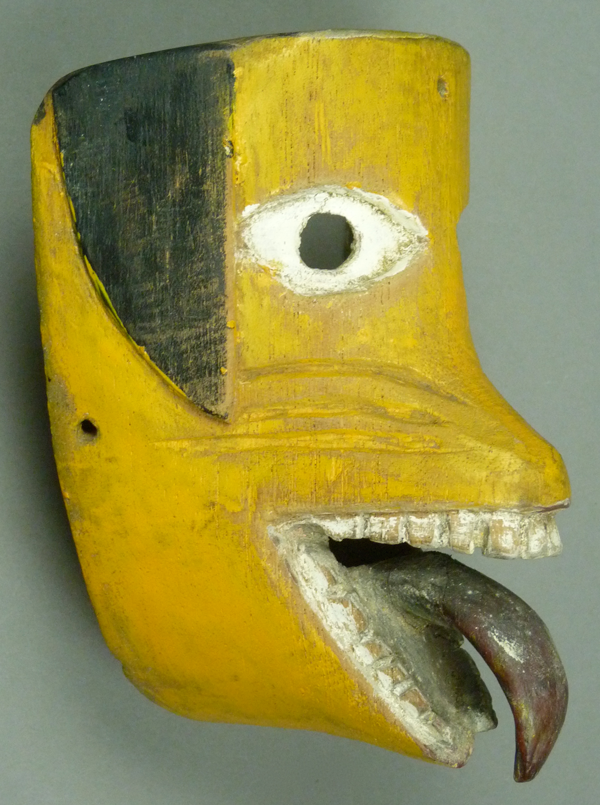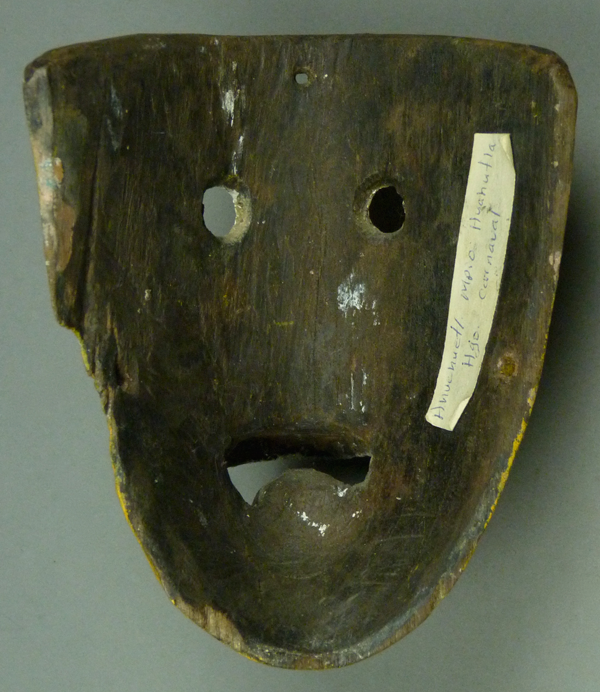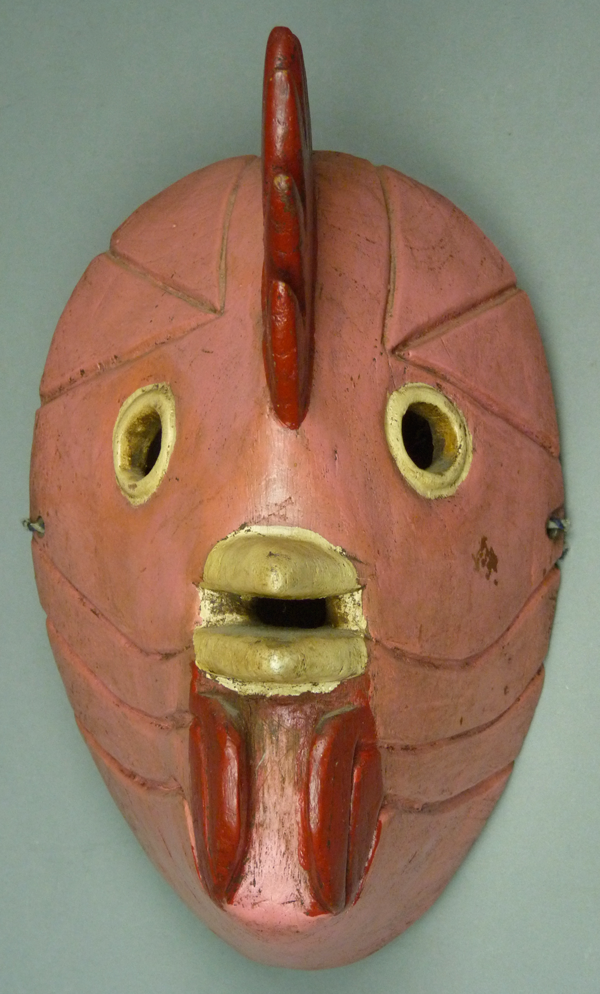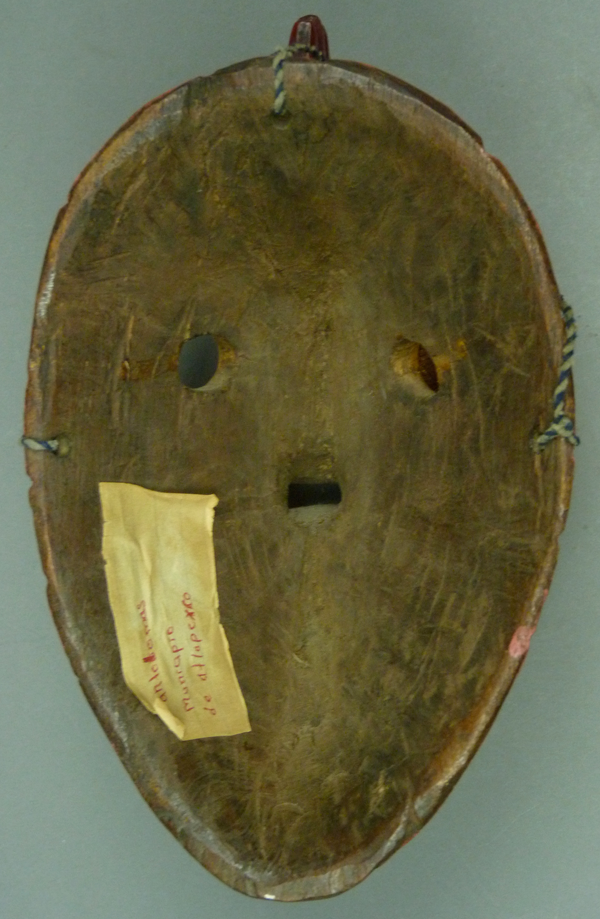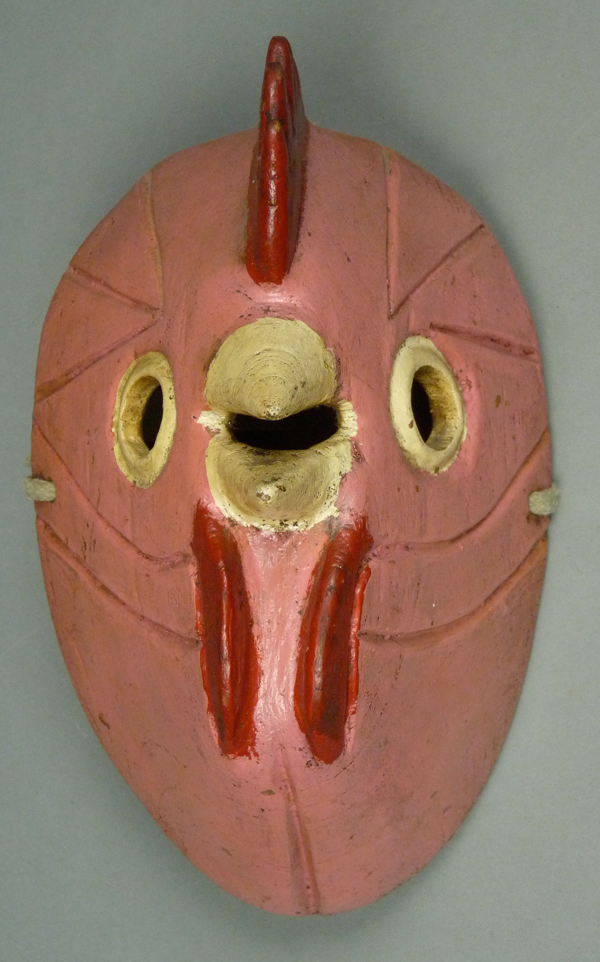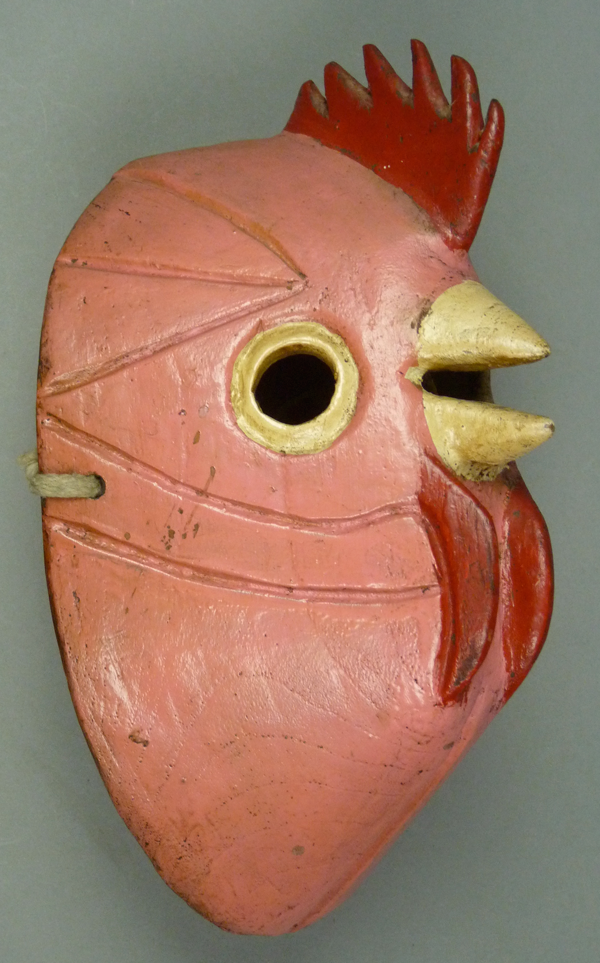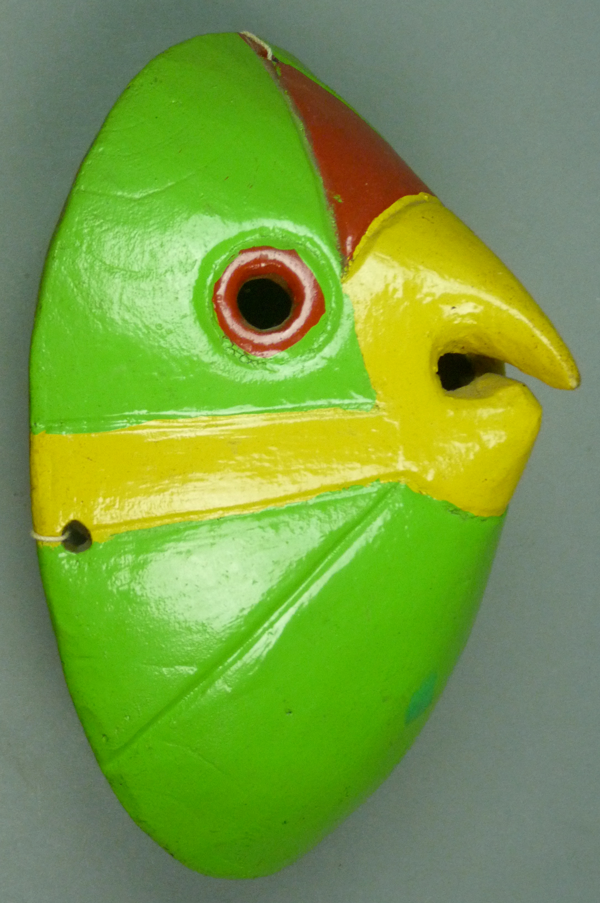In the course of collecting Xantolo masks, I found a number from towns in the Huasteca of Hidalgo and Veracruz that depicted animals or birds. Other similar masks were labeled as ones for Carnaval (Carnival or Mardi Gras). I am guessing that these masks might have been made for Carnaval and then used for the Xantolo performance. In Mask Arts of Mexico (Lechuga and Sayer 1994, page 55, plate 71) we find a mask with the form of a fish, which the authors report was “worn by Nahua performers during Carnaval and Day of the Dead ceremonies.” Today I will show you some of these masks, whether marked by one label or the other. I will start off with a group that are obviously all by the same anonymous hand as the Fish mask just mentioned. The first, with the Xipe Totec form, was clearly a Xantolo mask, while the rest are animals and birds.
As you can see, this mask has all of the usual elements of the Xipe Totec style Xantolo masks, with the addition of an extended tongue. I bought this mask from Robin and Barbara Cleaver in the late 1980s. Such masks came from towns in the Municipios of Atlapexco and Huejutla de Reyes, Hidalgo.
This mask is 7 inches tall, 5½ inches wide, and 4 inches deep.
The back shows moderate wear. Please note that the large curling tongue on this mask and the one on the dog that follows were carved from the wood that forms the rest of the mask; the tongues were not made from separate pieces of wood and then attached.
The next example is a Perro (dog) mask that was said to be for Carnaval. Do you see any resemblance to the Xipe mask? I bought this mask from the Phoenix Gallery in 1995, about seven years after I purchased the one just above. It is from Huehuetl, Hidalgo.
The tongue of this mask is as dramatic as that on the previous mask.
This mask is 6 inches tall, 4¾ inches wide, and 3½ inches deep.
This old and worn mask was collected in Huehuetl, in the Municipio of Huejutla de Reyes, Hidalgo. The accompanying label emphasized its use in Carnaval.
Next are a pair of chickens. I arbitrarily call the first a rooster and the second a hen, as they are obviously by the same hand but yet they are not exactly alike. I got these from Robin and Barbara Cleaver at about the same time that I bought the Xipe style mask from them.
These are charming masks.
This mask is 9 inches tall, 5¼ inches wide, and 3¾ inches deep.
The back is heavily stained from use. The label notes that this mask was found in Santo Tomas in the Municipio of Atlapexco, Hidalgo.
Here is the one that I am calling a hen.
This carver follows a simple formula.
This mask is 8½ inches tall, 5¼ inches wide, and 3½ inches deep.
This back is equally worn. This mask was found in Chalahuiyapa, in the Municipio of Huejutla de Reyes, Hidalgo. By now you may have noticed that the tags use phonetic spelling.
The fifth one of these masks by an anonymous master carver from Hidalgo depicts a parrot. The tag identifies it as a Chantolo (Xantolo). How vivid this mask is. I bought this at the Mano Magica Gallery in the city of Oaxaca, in 1993.
This parrot is in the same style ans the two chickens.
This mask is 8 inches tall,5¾ inches wide, and 3¼ inches deep.
Another worn old Xantolo, this one is from Banderas, Hidalgo.
Next week I will show additional Xantolo masks with animal faces.

